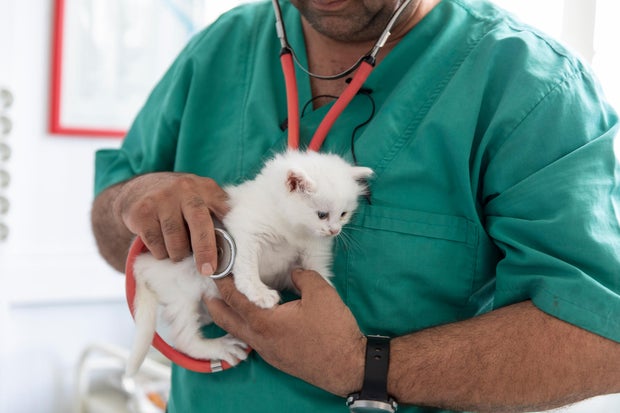Pet insurance and pre-existing conditions: What to understand
Pet insurance can be a smart way for owners to secure financial protection for themselves and medical care for their pets.
In exchange for a monthly fee to a provider (cheaper if paid on an annual basis), owners can rest easy knowing that their cat or dog has medical coverage in case there's an unexpected sickness or emergency. And, should the worst-case scenario arise, they'll have the financial support to get through it.
While the benefits of pet insurance are significant, it's important for owners to understand that this form of insurance doesn't work like many other types. Arguably, the most distinct way pet insurance differs from health insurance for humans is how pre-existing conditions are treated. That is, pre-existing conditions are generally not covered under most pet insurance plans.
This doesn't mean pet insurance isn't valuable (it is). But owners need to understand the intricacies of this form of insurance in order to get the best protection for their pets.
If you're in the market for pet insurance then start with a free price quote so you know what to expect.
Pet insurance and pre-existing conditions
If you have a pet with pre-existing medical conditions then you can generally expect that an insurance provider won't cover those specific issues. But what exactly is a pre-existing condition?
"A pre-existing condition is anything that happens before you enroll or during the waiting period," Fetch by The Dodo explains. "Like other providers, we don't cover pre-existing conditions."
Spot pet insurance also does not cover these types of medical issues.
"A pre-existing condition is any injury or illness which occurs or shows symptoms before coverage starts or during a waiting period," they explain on their website. "A condition is considered pre-existing whether or not it's been officially diagnosed or treated; all that matters is when it occurred or symptoms first displayed."
But, Spot notes, pet owners that fall in this category still have options.
"However, with plans provided by Spot, this doesn't mean the condition can't be covered in the future if the condition is curable," they explain. "An injury or illness that is curable, cured, and free of treatment and symptoms for 180 days will no longer be regarded as pre-existing, with the exception of knee and ligament conditions. If a knee or ligament condition occurs before the coverage effective date or during a waiting period, any future ones won't be covered."
Lemonade pet insurance goes one step further when clarifying which conditions will and won't be covered.
"A cured condition is a temporary condition or injury that is resolved for at least 12 months and may be considered for coverage in eligible states (check with customer service to find out if curable conditions are covered in your state)," the pet insurer notes. "Knee or ligament conditions and chronic conditions such as allergies, asthma or cancer cannot be cured."
Figo pet insurance also won't cover pre-existing conditions but the insurer says owners shouldn't worry.
"Pre-existing conditions help insurers determine what treatments they will (and won't) cover financially," the insurer explains. "They do NOT prevent your pet from getting care, nor do they disqualify your pet from obtaining insurance.
"The presence of a pre-existing condition merely means that the insurer may not reimburse you for any treatments directed toward that specific ailment. You may still opt to seek treatment for that condition, and you may still be compensated for treatments of other conditions affecting your pet."
Not sure what kind of coverage your pet is eligible for? Get a free price check from Spot and find out now!
How pre-existing conditions are determined
While every pet insurance provider is distinct there are some ways of typically determining a pet's pre-existing conditions.
"A pre-existing condition is determined by your pet's medical record," Lemonade explains. "So any signs or diagnoses of an illness that show up before your policy waiting periods are up would be considered a pre-existing condition."
This is one of the key reasons why pet owners should act promptly by securing a plan before ailments arise and coverage becomes more expensive.
"Your pet may not show signs of these medical conditions at birth, or in the first few years of their life," Lemonade pet insurance notes. "But if you wait until they develop symptoms to get insured, the condition probably won't be covered in your policy, which is a pretty big game-changer for pet owners struggling with vet bills related to a chronic condition."
The bottom line
There are multiple reasons to buy pet insurance. But perhaps the best reason to get it early is to avoid coverage issues. If you sign up with a provider now, while your pet is still relatively young and healthy, you can get more comprehensive coverage at a lower price.
Have more questions about pet insurance and pre-existing conditions? It's easy to get a quote and see what you qualify for or use the table below to find a provider who can help you get started.






